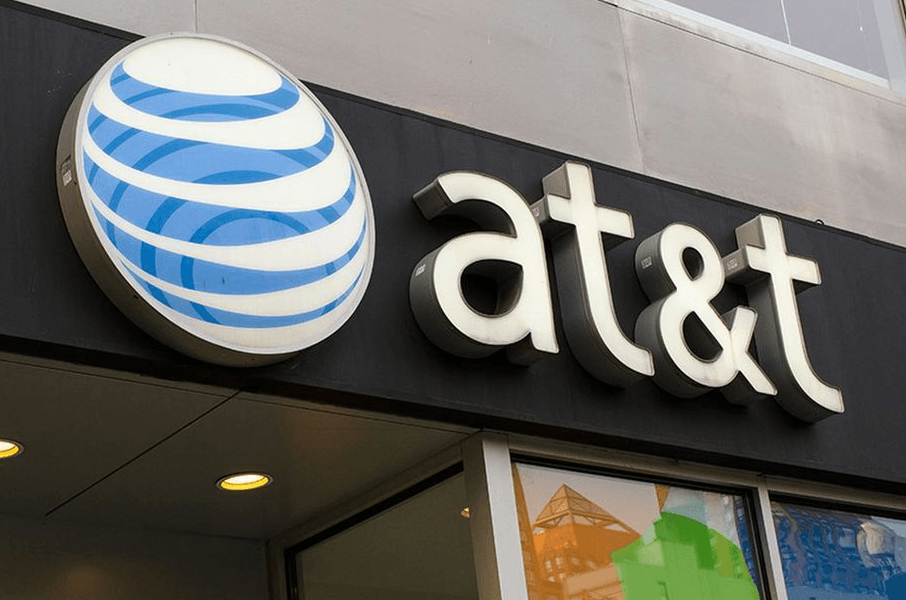Just when you thought it couldn’t get any worse for AT&T and Verizon Communications, shares of the two telecom titans have been hammered in recent days after The Wall Street Journal reported on copper telecommunications cables that had been wrapped in lead. Though it didn’t contain any numbers, it warned about the potential health impact of the decades-old wires and the potential costs to clean them up.
AT&T shares (ticker: T
At the risk of sounding Panglossian, they just might be. The market is taking a sell-first-and-ask-questions-later approach to AT&T and Verizon shares. Yet the math shows that both companies have the cash flow to support their payouts. For income investors with a strong stomach, they might just be worth taking a flier on.
Of course, doing the math requires numbers, and that’s where the uncertainty starts. Lead-wrapped cables aren’t a new issue—the industry phased them out decades ago. The cables are actually so old that it’s unclear even where they are located and who owns them. “So how big a deal is this?” asked MoffettNathanson analyst Craig Moffett in a Monday report. “The unsatisfying, but honest, answer is that at this point we have nothing but unknowns to work with and no real way to quantify the companies’ exposures.”
Other analysts felt similarly—and turned their concerns into actions. J.P. Morgan analyst Philip Cusick downgraded AT&T stock on July 14, despite a “record-low valuation,” citing slowing growth as well as the “overhang from potential lead liability.” Citigroup analyst Michael Rollins downgraded AT&T shares on Monday for similar reasons. Verizon stock also caught a downgrade Monday from Edward Jones analyst David Heger.
New Street Research analyst Jonathan Chaplin took a stab at quantifying the potential liability. He came up with a framework that tried to capture the unknown both in terms of the percentage of cables that will need to be remediated and the cost of replacing them. His estimated total? $60 billion, with AT&T accounting for $35 billion of that and Verizon on the hook for $8 billion.
If AT&T were forced to borrow $35 billion right now and put it in a trust for lead remediation, it would result in its debt going from roughly $160 billion to $195 billion. Debt to Ebitda-—short for earnings before interest, taxes, depreciation, and amortization—would rise from a manageable 3.4 times to a more concerning 4.3 times. At a rate of 6%, a little higher than where AT&T bonds yield today, the extra debt might add $2.1 billion in interest expense a year, bringing the total debt service to $8.3 billion annually.
The good news: AT&T is expected to produce $17 billion in free cash flow a year over the next three years, according to Wall Street estimates. Subtract the $2.1 billion in incremental debt services, and the $8 billion in annual dividend payments would consume a manageable 53% of expected free cash flow and 50% of adjusted net income, below the 80% that would be considered a payout is at risk. It wouldn’t be easy, but it looks like AT&T could handle a liability of as much as $40 billion.
“This doesn’t sink the boat on its own, though…. AT&T would have at least five years to do it,” says New Street’s Chaplin. “If they can keep cash flows steady, they can do this without cutting the dividend.”
The same calculations using Chaplin’s numbers for Verizon lead to similar conclusions. Verizon would have to take on roughly $9 billion in debt, leading to an extra $500 million in interest and annual debt service of roughly $4.2 billion. Free cash flow is expected to be almost $19 billion a year for the coming three years. Dividend payments of about $11 billion would consume around 60% of Wall Street’s adjusted average free cash flow projected for the coming few years.
That isn’t to say there aren’t risks. The cost to handle the lead-covered wires could be higher than these estimates. Free-cash-flow estimates could also prove to be too high due to increased competition, something J.P. Morgan’s Cusick fears. Still, free cash has held up during prior ups and downs. At AT&T, free cash flow has covered the dividend in 18 of the past 20 years, with payments consuming roughly half of free cash over that period.
All this is theoretical, and it can be hard—a bad idea, even—to argue with the market. Still, AT&T and Verizon stocks are getting close to the point where they look to reflect all the potential losses and then some.
The more they fall, the more attractive they will be.

